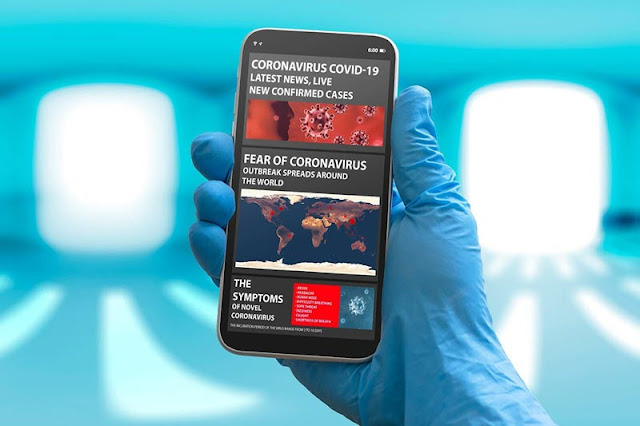How to Get COVID-19 Related Alerts on Your Phone
Use the COVID-19 Exposure Notifications System on your Android phone
To help understand whether you've been exposed to someone who reports having COVID-19, you can turn on Exposure Notifications. If you change your mind, you can turn it off.
To use the system, you need to either download an official app from your region’s government public health authority or, if supported in your region, enable it directly in your device Settings.
- If you have COVID-19, you may share that info in Exposure Notifications to help alert the people you've been in contact with.
- If you've been exposed to someone who has shared they have COVID-19, you may be notified and provided with further instructions.
How your phone got the update
Your Android phone regularly gets updates in the background. The Exposure Notifications System was introduced in an update to Google Play Services. This update did not automatically turn on Exposure Notifications or enable any Exposure Notifications functionality.
Exposure Notifications only works if you decide to opt-in. If you change your mind, you can turn it off at any time.
Most Android phones get this update. Some Huawei phones may not get the update.
What you need to get started
Some public health authorities build custom apps, some customize a template app provided by Google, and some choose an option to allow you to enable Exposure Notifications directly from device settings.
Download an official app
If supported by your region, you can download an official app from your region's public health authority in the Play Store.
Apps that work with the Exposure Notifications System have a badge . Apps that do not have the badge do not use the Exposure Notifications System.
To download an official app:
- Find available apps for your region.
- If an app is available, download it from the Play Store.
The app tells you how to turn on exposure notifications. For help with your app, contact the app developer.
Set up Exposure Notifications through device settings
If supported in your region, you can turn on Exposure Notifications directly from the settings on your Android device.
- On your Android device, open the Settings app.
- Tap Google and then COVID-19 Exposure Notifications and then Add a region.
If your region supports Exposure Notification through Settings, you won’t need to download a separate app.
Check or change phone settings
- Make sure your phone is running Android 6.0 or above. Learn how to check and update your Android version.
- Turn on your phone’s Bluetooth. Learn how to turn on Bluetooth.
On Android 10 and earlier, turn on your phone's Location setting. Learn how to turn on Location. The system uses this to scan for Bluetooth signals but it does not collect or track your location. Learn why location needs to be on for the system to work.
For phones running Android 11, your phone's Location setting does not need to be on.
How Exposure Notifications work
Once you opt-in to the Exposure Notifications System, it will generate random IDs on your device. To help prevent tracking, your phone's random ID changes every 10-20 minutes.
Your phone works in the background to share these random IDs via Bluetooth with the phones around you that also have Exposure Notifications on. When your phone detects a random ID from another device, it records and stores the ID on your device.
If someone reports having COVID-19 and their ID is stored on your phone, your app will notify you of next steps to take.
How exposure is determined
Government public health authorities determine which factors might indicate exposure.
If you may have come in contact with someone who reports themself as having COVID-19, the system may share information to help determine whether the contact meets the criteria for an exposure, including:
- The day the contact happened.
- How long the contact lasted.
- The Bluetooth signal strength of that contact.
- The Exposure Notifications System itself does not use your location.
How the Exposure Notifications System protects your privacy
You choose to use the system and share your data
This system only works if you decide to use it. You control whether you receive exposure notifications, and you decide if and when to share your data. If you have COVID-19, you can choose to share your random IDs to help notify others of possible exposure.
Neither Google, Apple, nor other users can see your identity
All of the Exposure Notification matching happens on your device. This means only you and your health authority know if you report having COVID-19 or have been exposed to someone who has reported having COVID-19. Your identity is never shared with other users, Apple, or Google.
Your location is not tracked
The Exposure Notifications System does not collect or use the location from your device. It uses Bluetooth, which can be used to detect if two devices are near each other — without revealing where the devices are.
Your public health authority is also not allowed to use your phone’s location or track your location in the background.
In Android 10 and earlier, learn why location needs to be on for Exposure Notifications to work.
Only public health authorities can use this system
Only official public health authority apps can use the system. Their apps must meet specific criteria around privacy, security, and data use.
Source Link : https://support.google.com/android/answer/9888358?hl=en










Post a Comment
Tips for inserting images in the comments column by adding the code below.
[img] Your Image URL [/img]